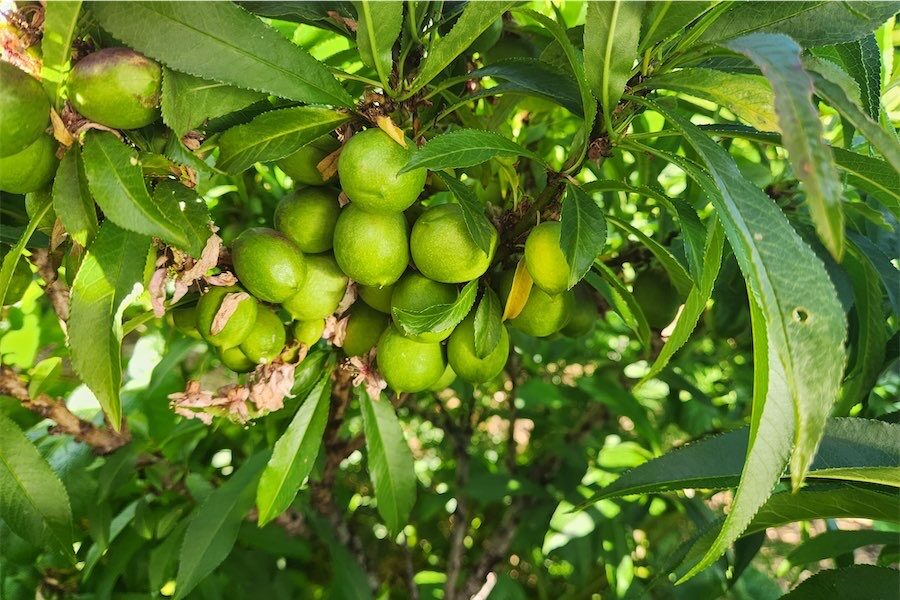
For those with new gardens, here are a few pointers to a successful display of roses. I always recommend roses that are two-years-old with strong stems.
Some retail outlets, such as supermarkets and DIY stores, sell one-year-old packaged roses at cheaper prices. Often they are on display in artificial light and air conditioning. These conditions promote new shoots that will be extremely soft and, once planted outside, the first frost can burn off the new shoots or kill the rose completely.
I strongly urge you to buy roses from your local garden centre where they are displayed outside in natural conditions. Certainly, you will pay more for quality, well-grown roses. However, investing in a shrub that may be flowering in your garden for the next 25 years or more is worth paying the extra.
Check the roots of new roses, if any are broken, trim these back with sharp secateurs. Always ensure the hole is large enough to spread the roots out evenly and plant the rose on a small mound in the bottom of the hole. Keep the bud or graft union above the ground.
At planting time, do not worry if some of the stems are a bit straggly or have not been pruned to an outward-facing bud, this can be done after the first shoots appear.

Aspect: Roses require full sun for a minimum of eight hours a day. They will flower in less light, however this can result in leggy growth and inferior quality blooms.
Soil: Roses will grow in most soils with good results. It is often said that roses prefer clay soils. No plants like heavy, clay soils, although roses will tolerate clay more than many other plants.
The use of a liquid clay breaker such as Multicrop “Ground Breaker” will be of benefit. The addition of washed river sand, well-rotted organic matter such as composted cow manure will lighten heavy soils. Good drainage is vital.
DO NOT put fresh animal manures or chemical fertilisers near the roots at planting time; these can cause severe root damage. If planting where roses have been grown previously, it is vital to remove all the existing soil, say a barrowful, and replace.
This will overcome a disease known as “rose sickness” that can remain in the soil.
Mulching: Essential for weed control and evaporation in summer, plus keeping the root zone cool. A combination of composted cow manure combined with shredded lucerne hay is ideal (refer to my Cedfacts Garden Information Sheet “What’s so special about lucerne hay?” at www.cedricbryant.com).
Alternatively, use Canberra Organic Mulch available from Canberra Sand and Gravel. Keep mulch 100mm away from the stems to prevent collar rot.
Fertilising: Roses with their extended flowering season need more regular feeding than most other plants. At planting time, water the roses in with Maxicrop “Seaweed Plant Nutrient”.
This specifically promotes new and stronger root growth, essential for young plants. It also reduces the effect of frost. A few follow-up applications in the first season will be beneficial.
Every six weeks apply Neutrog “Seamungus”, a pellet combination of chook manure (from free-range hens) and seaweed. This meets AS 6000 Australian Standard for organic fertilisers. Spread around the drip line, not close to the stem.
[box] Rose mania starts here
• Keep a watch in this column for details on rose pruning demonstrations.
• Do not prune roses until the end of August or early September.
• Grow a thorn-less climbing rose on a north-facing wall as illustrated here in Cedric’s garden.
• Roses can be grown in containers. Put a layer of charcoal in the base of the container as a soil sweetener and drainage.
• If using wooden barrels, paint the inside with a bitumen paint such as Ormonoid to preserve the timber. Available from DIY stores. [/box]
Who can be trusted?
In a world of spin and confusion, there’s never been a more important time to support independent journalism in Canberra.
If you trust our work online and want to enforce the power of independent voices, I invite you to make a small contribution.
Every dollar of support is invested back into our journalism to help keep citynews.com.au strong and free.
Thank you,
Ian Meikle, editor




Leave a Reply